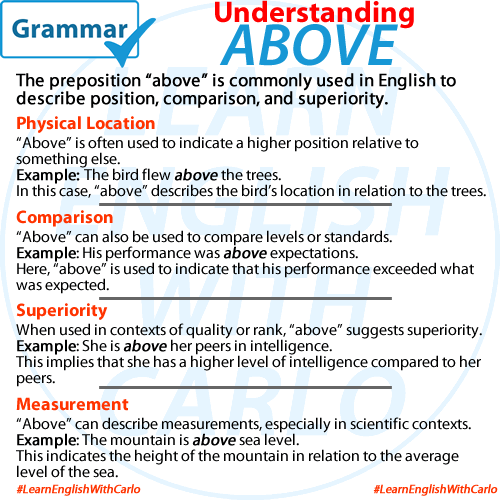The preposition “above” is commonly used in English to describe position, comparison, and superiority. This post will explore its various uses and provide examples to help you understand how to use “above” correctly.

1. Physical Location
“Above” is often used to indicate a higher position relative to something else.
- Example: The bird flew above the trees.
- Explanation: In this case, “above” describes the bird’s location in relation to the trees.

2. Comparison
“Above” can also be used to compare levels or standards.
- Example: His performance was above expectations.
- Explanation: Here, “above” is used to indicate that his performance exceeded what was expected.
3. Superiority
When used in contexts of quality or rank, “above” suggests superiority.
- Example: She is above her peers in intelligence.
- Explanation: This implies that she has a higher level of intelligence compared to her peers.
4. Measurement
“Above” can describe measurements, especially in scientific contexts.
- Example: The mountain is above sea level.
- Explanation: This indicates the height of the mountain in relation to the average level of the sea.

